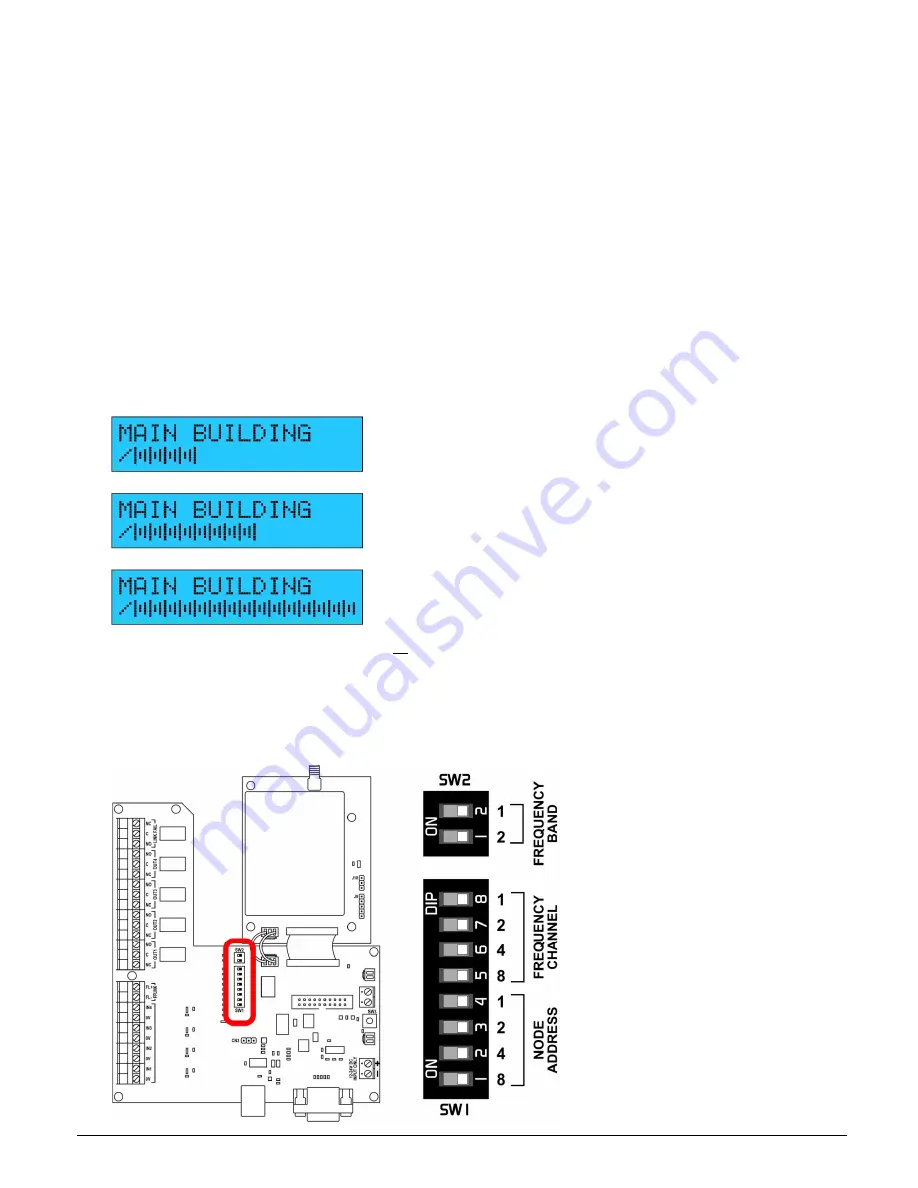
F-Link Mk4 Supervised Transceiver System
Ref: FLNK4red
Page 5 of 23
Issue 1
2.
Pre-Installation
We strongly recommend that steps 2.1 - 2.3 are undertaken with all units located in the same area, before
they are installed in their final positions.
2.1
Setting the frequency channel
The F-Link system can operate on one of 32 frequency channels between 458.5125MHz and 458.9375MHz. A
full radio survey of the site should be carried out to establish the most suitable clear frequency, and a range test
kit is available to loan from Scope. However in the absence of a full survey it is possible to carry out a basic
check using a single F-Link unit.
2.1.1
Basic RSSI Check
Working with a single F-Link unit, first connect the antenna and then connect a suitable temporary 12v or 24v dc
power supply (or charged 12v battery) to the power input terminals. Make sure none of the other F-Links are
powered up. The display will show the background RSSI signal level for the currently selected frequency
channel as a bar graph. A consistent level below approx. 30% suggests the chosen frequency channel is
probably suitable for use. If any signals are witnessed over this level then an alternative frequency channel
should be selected, and the check repeated. See 2.1.3 overleaf for details on how to change the frequency
channel.
Maximum acceptable background signal level
Background signal level too high, try a different channel
Strong interfering signal, try a different channel
Once a clear frequency channel is found, set all F-Links to use this channel and proceed to step 2.2 ‘Creating the
F-Link network’ on page 7.
2.1.2
Dip switch settings
The next few steps involve changing dip switch settings, which are located on the main circuit board as shown
below. To make changes, use a suitable non-conductive implement to carefully move each dip switch to the
required position.
You may need to remove a protective
film from the top of the dip switches
if present (this is left over from the
manufacturing process and is not
required).
The F-Link will detect any changes
made to its dip switch settings and
reboot automatically after a few
seconds.
If Node addresses have been
changed then the system may also
need to automatically redistribute its
configuration settings, which will
take several minutes.




















